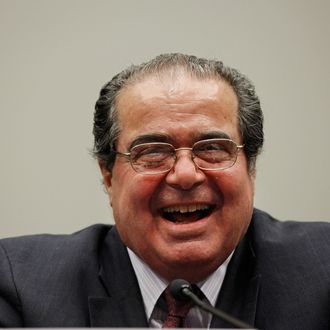
The average age of the Supreme Court justices is old. As such, their familiarity with technology varies. For instance, Justice Sonia Sotomayor, who is 59, is pretty savvy. During today’s arguments in the Aereo case — read Kevin Roose’s explainer here — she mentioned that she owns a Roku streaming device, which works with Netflix, Hulu, HBO, and more. Justice Antonin Scalia, 78, on the other hand, is still figuring out how premium cable works.
(Knowing his audience, the attorney for the broadcast networks said in one example, “If the theater down the street had a screening of Casablanca …” No one asked for clarification.)
Here’s the full exchange with Aereo’s attorney, in which Scalia was told that HBO is not in fact TV in the traditional sense:
JUSTICE SCALIA: Mr. Frederick, your client is just using this for local signals—
MR. FREDERICK: Yes.
JUSTICE SCALIA: —right now. But if we approve that, is there any reason it couldn’t be used for distant signals as well?
MR. FREDERICK: Possibly.
JUSTICE SCALIA: Possibly what? There is possibly a reason, or it could possibly be used?
MR. FREDERICK: It can’t be used for distance, but it implicates—
JUSTICE SCALIA: What would the difference be? I mean, you could take HBO, right? You could carry that without performing.
MR. FREDERICK: No, because HBO is not done over the airwaves. It’s done through a private service.
It’s almost scary to think about how much he’d enjoy Game of Thrones.





























